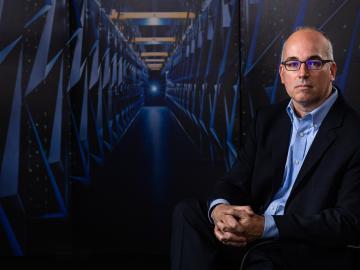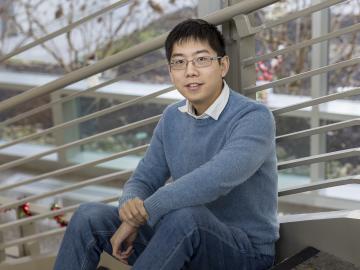
Filter News
Area of Research
- Biology and Environment (11)
- Chemistry and Physics at Interfaces (1)
- Clean Energy (16)
- Energy Frontier Research Centers (1)
- Functional Materials for Energy (1)
- Fusion and Fission (3)
- Isotopes (6)
- Materials (18)
- Materials Synthesis from Atoms to Systems (1)
- Materials Under Extremes (1)
- National Security (6)
- Neutron Science (3)
- Nuclear Science and Technology (1)
- Supercomputing (2)
News Type
News Topics
- 3-D Printing/Advanced Manufacturing (2)
- Artificial Intelligence (2)
- Big Data (1)
- Bioenergy (3)
- Biology (4)
- Biomedical (5)
- Buildings (2)
- Chemical Sciences (5)
- Clean Water (2)
- Climate Change (3)
- Computer Science (4)
- Coronavirus (5)
- Critical Materials (1)
- Cybersecurity (2)
- Decarbonization (3)
- Energy Storage (8)
- Environment (11)
- Exascale Computing (1)
- Frontier (2)
- Fusion (3)
- Grid (3)
- High-Performance Computing (3)
- Hydropower (2)
- Isotopes (5)
- Machine Learning (3)
- Materials (4)
- Materials Science (2)
- Mathematics (3)
- Mercury (1)
- Microscopy (2)
- Nanotechnology (2)
- National Security (6)
- Neutron Science (4)
- Nuclear Energy (4)
- Physics (9)
- Polymers (1)
- Quantum Computing (1)
- Security (2)
- Simulation (3)
- Summit (2)
- Sustainable Energy (1)
- Transportation (2)
Media Contacts

After several years in the private sector exploring the unknown origins of neurodegenerative brain disorders such as Alzheimer’s, Chris Ellis thinks one of the keys to solving the mystery is at Oak Ridge National Laboratory: the world’s most powerful supercomputer.

Liam Collins was drawn to study physics to understand “hidden things” and honed his expertise in microscopy so that he could bring them to light.

A typhoon strikes an island in the Pacific Ocean, downing power lines and cell towers. An earthquake hits a remote mountainous region, destroying structures and leaving no communication infrastructure behind.

Eugene P. Wigner Fellow Victor Fung’s story is proof that a series of positive experiences around science and happy accidents can lead to a rewarding research career. He joined ORNL in 2019.

From the bluebird painting propped against her office wall and the deer she mentions seeing outside her office window, Linda Lewis might be mistaken for a wildlife biologist at first glance. But rather than trailing animal tracks, Lewis, a researcher at the Department of Energy’s Oak Ridge National Laboratory, is more interested in marks left behind by humans.


